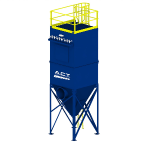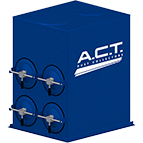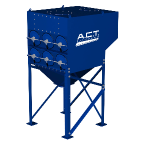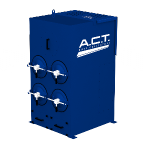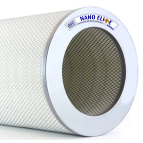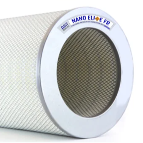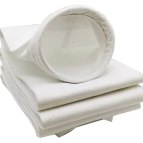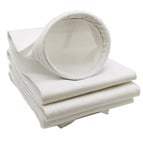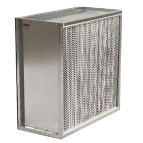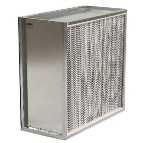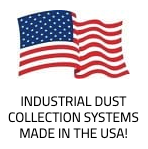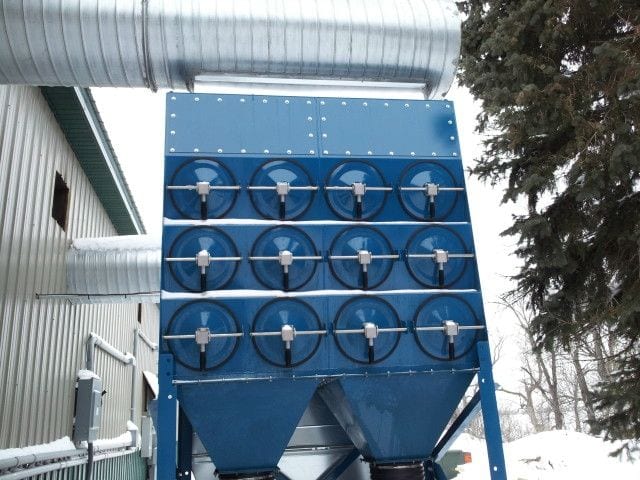 Welding processes create fume and smoke, resulting in poor air quality. Weld smoke is a leading source of air contamination in a metal fabrication facility. Some welding applications such as galvanized metal or stainless are very harmful and must be captured. Capturing smoke and fumes from welding or cutting applications, however, can be a challenge.
Welding processes create fume and smoke, resulting in poor air quality. Weld smoke is a leading source of air contamination in a metal fabrication facility. Some welding applications such as galvanized metal or stainless are very harmful and must be captured. Capturing smoke and fumes from welding or cutting applications, however, can be a challenge.
Robotic welding, for instance, requires extra dust collection due to the large volume of dense smoke it creates. Manufacturers involved in robotic welding must have an efficient air quality system in place to meet safety regulations.
Because robots are typically used in high-volume production, the level of smoke generation is very high, making smoke and fume capture even more challenging. With a high-quality welding fume extractor, it doesn’t have to be.
Welding Fume Extraction
Extraction at source is the most effective and efficient solution for capturing welding and cutting fumes. At-source welding fume extraction minimizes the risk of the welder or operator being subject to hazardous fumes.
Welders especially need to be protected from hexavalent chromium. Hexavalent chromium is a form of chromium and, if breathed at high levels, can lead to health problems. Chromium is a component in stainless steel, nonferrous alloys, chromate coatings and some welding consumables. And Cr(VI) fume is highly toxic and can damage the eyes, skin, nose, throat, and lungs and cause cancer.
Welding Fume Extraction At Source With Fume Arms
At A.C.T. Dust Collectors, we offer fume arms that are perfect in medium- to heavy-duty welding fume and welding dust and smoke applications. Fume arms allow you to capture and extract containment fumes at the source. Our self-supporting fume extraction arms are fabricated of steel with external joints which are fully adjustable to the workers’ desired tension.
Clear the Air With Welding Smoke and Fume Collectors
Our weld smoke and fume collectors use Nano-Elite filter media that features a MERV 15 efficiency rating for effective collection of fine dust, smoke and fumes. Contaminated air should be filtered through a smoke and welding fume collector. The downward airflow technology maximizes airflow in the collector to assist with dust separation.
Air-to-Cloth Ratio
One of the most important things to consider in an air quality system design is sizing your dust collector appropriately for your application. A big part of that is the air-to-cloth ratio, which quantifies the amount of air going through one square foot of filter media. When it comes to dust collector sizing, keep in mind cubic feet per minute (CFM) and the square feet of filter area. Air-to-cloth ratio is calculated by taking the amount of airflow (CFM) and dividing it by the amount of filter area with a dust collector.
If a dust collector was moving 4,000 CFM and had 2,000 square feet of filter area, it would have an air-to-cloth ratio of 2:1. For high-production robotic welding, the industry recommended air-to-cloth ratio is between 1.5:1 and 2.1:1.
Air-to-cloth ratios can give good guidance when determining the size of the dust collector required for a given amount of air. A lower air-to-cloth ratio results in longer filter life and is often used in nuisance applications, while a higher air-to-cloth ratio results in shorter filter life and is often used when dust loading is lighter.
A.C.T. Dust Collectors offers the ultimate in air filtration. Our dust collectors for welding smoke and fumes use ultra-high efficiency and can integrate with any welding process, much like this large weld fume application in North Dakota. Does your company have a welding or cutting application that desperately needs a fume or weld smoke collector? Contact us today.

























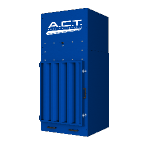
%20Collectors%20Image.png?width=143&height=143&name=ADC%20(Ambient)%20Collectors%20Image.png)
